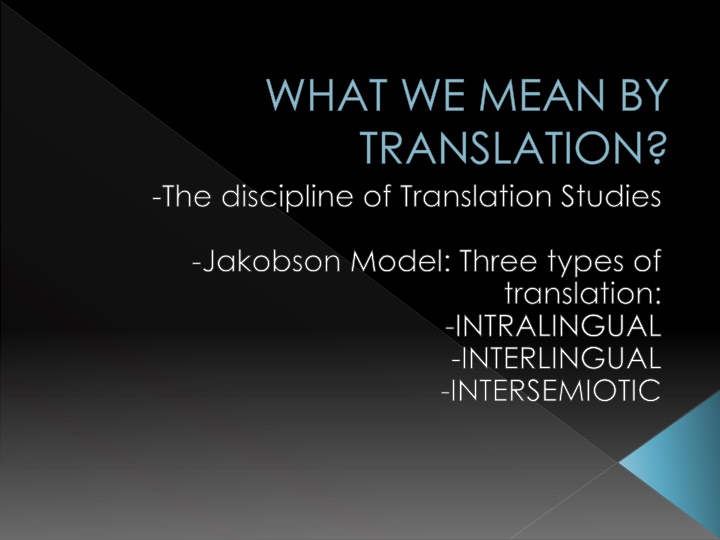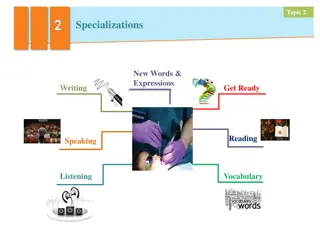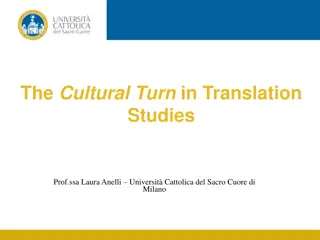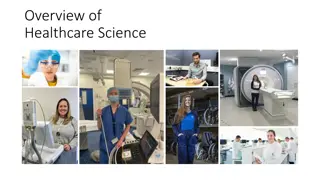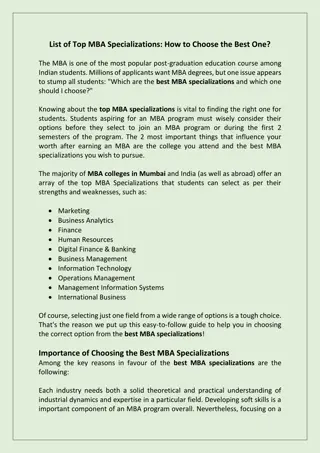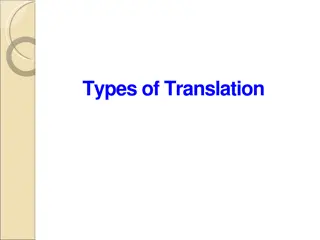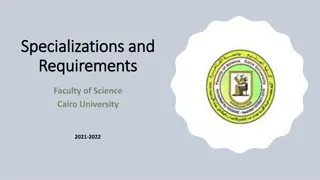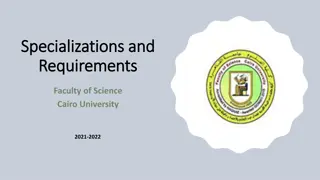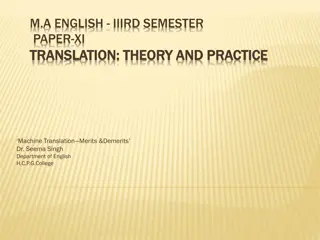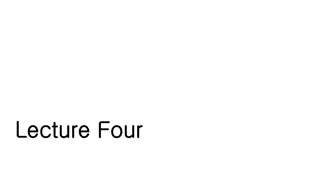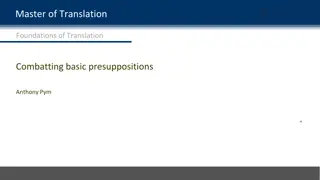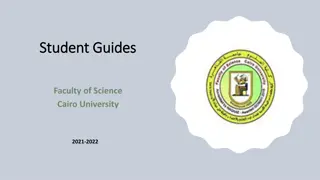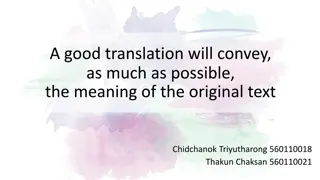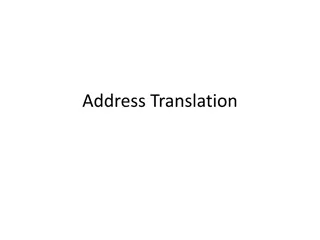Evolution of Translation Studies: From Ancient Practices to Modern Specializations
Translation studies have evolved into a new discipline focusing on intralingual, interlingual, and intersemiotic translation. Starting with historical figures like Cicero and Jerome, the discipline has now expanded into specialized areas such as scientific, technical, and audiovisual translation programs. The demand for skilled translators has increased, leading to diverse translation and interpreting opportunities across various fields.
Download Presentation

Please find below an Image/Link to download the presentation.
The content on the website is provided AS IS for your information and personal use only. It may not be sold, licensed, or shared on other websites without obtaining consent from the author.If you encounter any issues during the download, it is possible that the publisher has removed the file from their server.
You are allowed to download the files provided on this website for personal or commercial use, subject to the condition that they are used lawfully. All files are the property of their respective owners.
The content on the website is provided AS IS for your information and personal use only. It may not be sold, licensed, or shared on other websites without obtaining consent from the author.
E N D
Presentation Transcript
WHAT WE MEAN BY TRANSLATION? -The discipline of Translation Studies -Jakobson Model: Three types of translation: -INTRALINGUAL -INTERLINGUAL -INTERSEMIOTIC
MAIN ISSUES OF TRANSLATION STUDIES The practice of translating is long- established, but the discipline of translation studies is relatively new. James Holmes s The Name and Nature of Translation Studies is considered to be the founding statement of a new discipline.
Source Text_______Target Text INTRALINGUAL: INTERLINGUAL: INTERSEMIOTIC: Rewording Translation Proper Transmutation,an interpretation of verbal signs. (Jakobson 1959:2012.127)
What is translation studies? Throughout history, written and spoken translations have played a crucial role in interhuman communication. The discipline is generally known as Translation Studies .
-the demand for translation has soared, so; There has been a vast expansion in specialized translating and interpreting programmes. These include; Applied translation studies, scientific and technical translation, conference and bilateral interpreting, audiovisual translation, specialized Sign Language and audio description.
-An early history of the discipline Cicero and Horace (the first century AD) St. Jerome (the fourth century) (his approach to translating the Greek Septuagint Bible into Latin would affect later translations) o In Western Europe, the translation of the Bible.(conflicting ideologies for well over a thousand years during the Reformation in the sixteenth century.)
-comparative literature&contrastive linguistics In 1920s, the translation workshops were intended as a platform for the introduction of new translations into the target culture and for the discussion of principles of translation process and understanding a text. In the 1950s and 1960s, the more systematic, linguistic-oriented approach to the study of translation began to emerge.
James Holmes put forward an overall framework describing what translation studies cover. The Name and Nature of Translation Studies generally accepted as the founding statement for the field. Holmes drew attention to the limitations because translation research, lacking a home of its own, was dispersed across other disciplines (languages,linguistics,etc.).
The descriptive branch of pure research in Holmes s map is known as DTS (Descriptive Translation Studies) Product-Oriented DTS -the description or analysis of a single ST-TT pair of comparative analysis of several TTs of the same ST (analysis looking at a specific period/language/text type) Function-Oriented DTS -the function of the text in the recipient socio-cultural situation (the study of contexts rather than texts) (the sociology and historiography of tr.)
Process-Oriented DTS -The psychology of translation (what happens in the mind of a translator during the translation process) (Translation is the decision-making process!) Medium-Restricted Theories Area-Restricted Theories Rank-Restricted Theories Text-Type Restricted Theories Time-Restricted Theories Problem-Restricted Theories
Developments since J.Holmes: The linguistics-oriented science of translation has continued strongly in Germany. The concept of equivalence has been questioned and reconceived. Language as a communicative act in socio-cultural context, came to prominence in the early 1990s.
The rise of theories centered around text types and text purpose (the skopos theory)- by Reiss and Vermeer The rise of a descriptive approach- that had its origin in comparative literature and Russian Formalism. The idea of literary polysystem by Itamar Even-Zohar and Gideon Toury. (polysystem-different literatures and genres compete for dominance.)
Susan Bassnett and Andre Lefevere-The Manipulation School The 1990s saw the incorporation of new approaches and concepts (gender, postcolonial translation theories) Dynamic and culturally-oriented approaches Lawrence Venuti called for greater visibility and recognition of the translator.
Interdiscipline or Multidiscipline? An interdiscipline challenges the current conventional way of thinking by promoting and responding to new links between different types of knowledge. Linguistics /Modern Languages Comparative Literature Cultural Studies Philosophy Sociology (as well as history)
